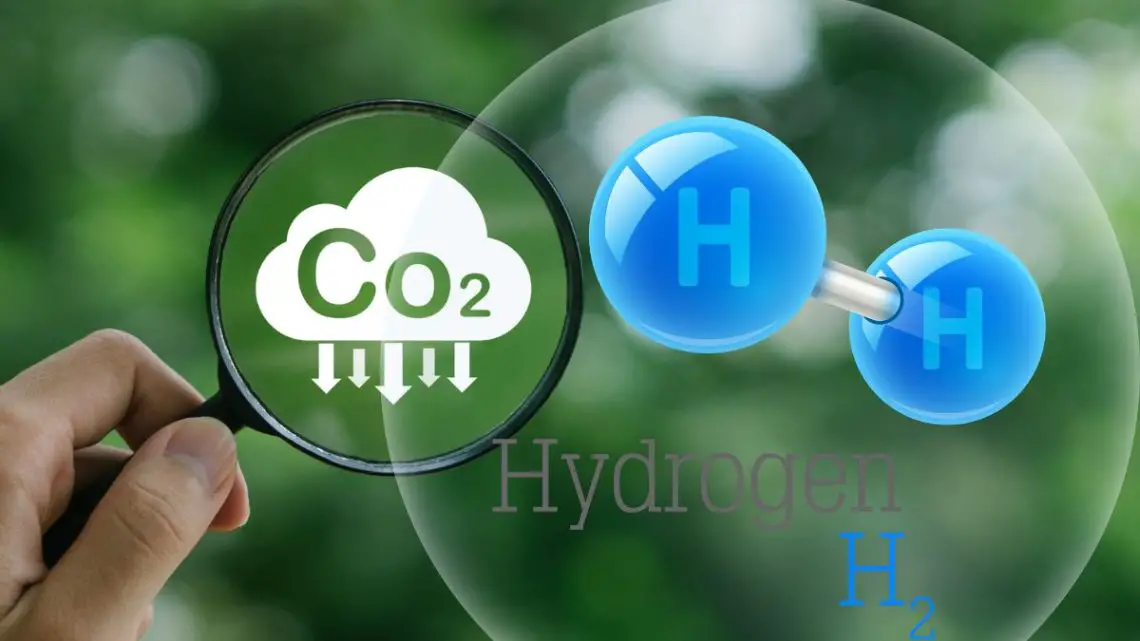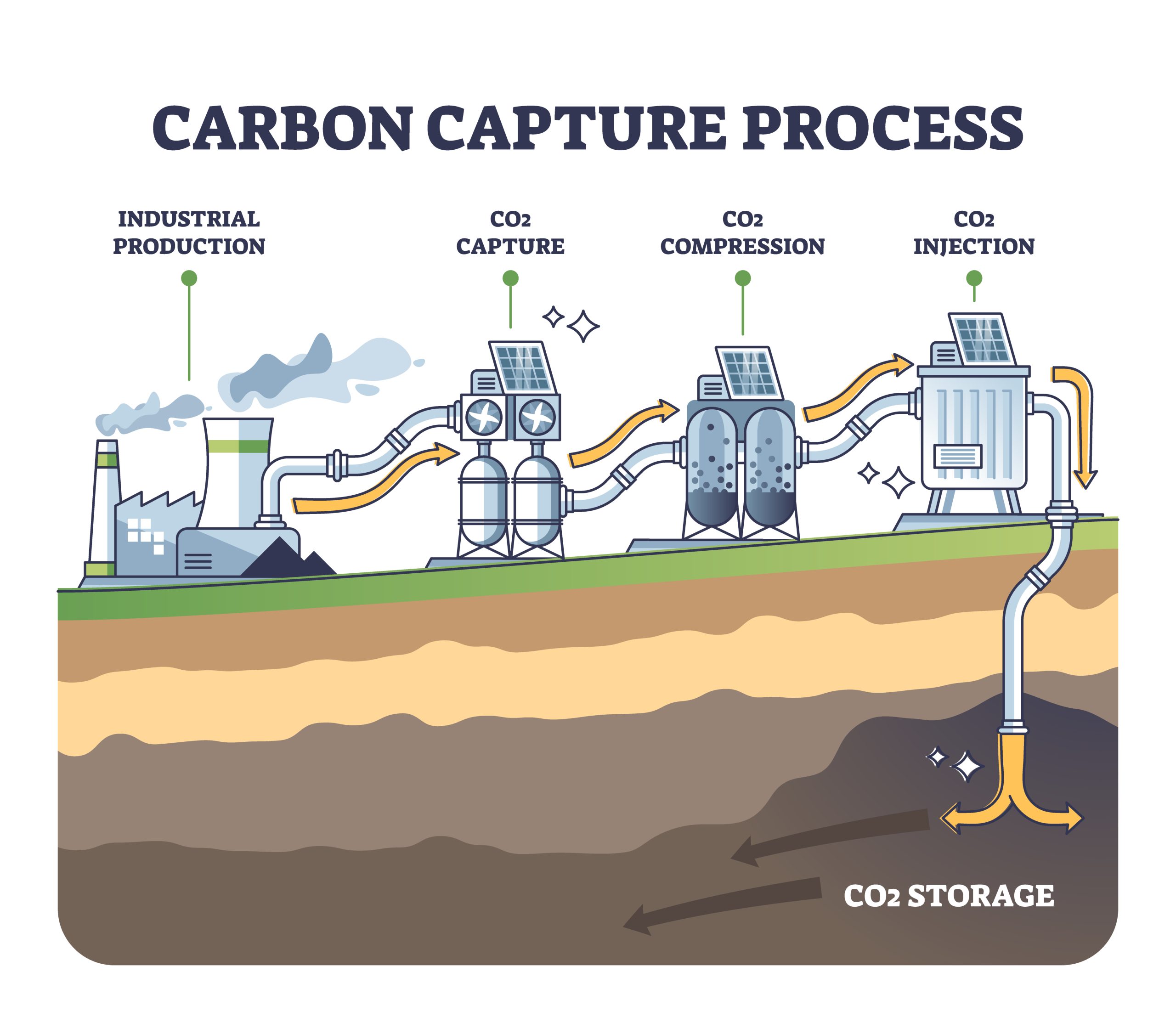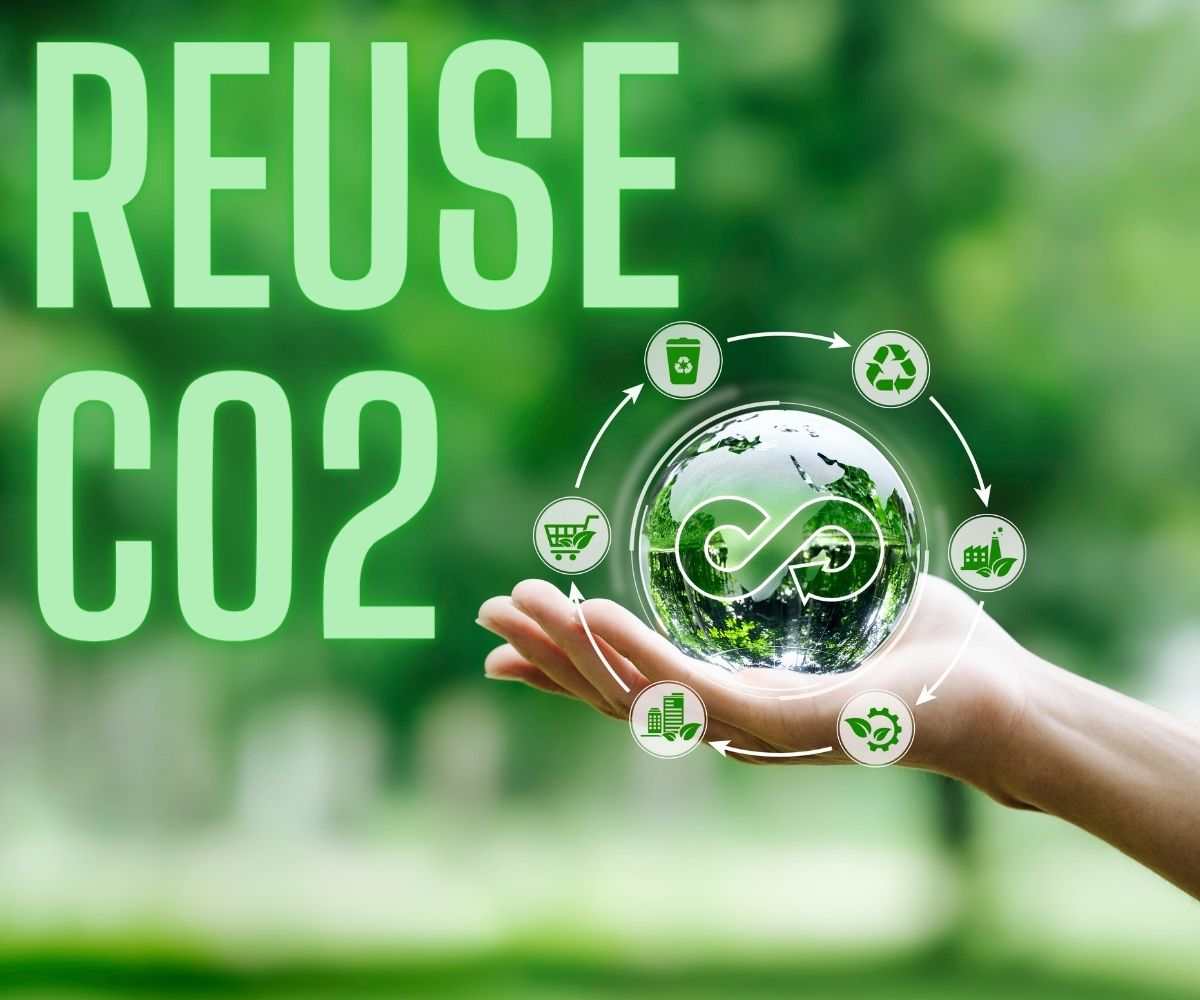
Unlocking Hydrogen: Carbon Capture Explained
March 3, 2024 0 By Jake BanksExploring the world of carbon capture technology opens up a pathway to understanding how advanced science is being utilized to combat the pressing issue of climate change. By diving into the science behind capturing carbon dioxide directly from the environment or emission sources, we unpack the foundation of a method that not only helps reduce greenhouse gases but also plays a key role in producing a cleaner form of energy – hydrogen. This journey through the intricate details of carbon capture methods, their application in hydrogen production and the challenges they face, uncovers the significant impact these technologies can have on our environment and economy.
Fundamentals of Carbon Capture Technology
Understanding Carbon Capture Technology: A Deep Dive into its Operations
As climate change continues to challenge global efforts to reduce carbon footprints, carbon capture technology emerges as a groundbreaking solution. This innovative approach aims at trapping carbon dioxide (CO2) emissions directly from the source, such as power plants, before they reach the atmosphere, and subsequently storing or utilizing them in a way that prevents them from causing harm.
Post-combustion capture
The core principle of carbon capture technology is simple yet incredibly sophisticated. It begins with the process of capturing CO2 emissions. This can be accomplished through various techniques, one of the most common being post-combustion capture. In this method, CO2 is separated from the exhaust gases generated by burning fossil fuels. The technology employs solvents that absorb CO2; these solvents are then heated in another chamber where CO2 is released and collected.
Pre-combustion capture
Pre-combustion capture is another method, where fuels are converted into a synthesis gas (syngas) consisting of hydrogen and carbon dioxide. The CO2 is then separated from the hydrogen before combustion occurs. The hydrogen can subsequently be used as a clean fuel, while the captured CO2 is processed for storage or use.
Once the CO2 is captured, the next step is transportation.
This is typically achieved through pipelines specially designed to handle pressurized CO2, transporting it to a storage or utilization site. These sites could be deep underground formations, such as depleted oil and gas fields or deep saline aquifers, where CO2 can be injected and permanently stored. The process, known as geological sequestration, involves injecting CO2 into rock formations that trap it and prevent it from migrating to the surface.
Multi-purpose Use
An alternative to geological storage is utilizing the captured CO2 in various industries. For instance, CO2 can be used in enhanced oil recovery (EOR) processes, where it’s injected into oil fields to increase pressure and extract more oil. It can also be converted into useful products like plastics, concrete and even biofuel, through innovative chemical processes, providing a sustainable way to repurpose CO2 emissions.
Carbon capture technology is pivotal in our transition towards a more sustainable future. By effectively reducing the amount of CO2 released into the atmosphere, it plays a crucial role in mitigating climate change. However, its success depends on overcoming challenges such as high operational costs, energy requirements, and ensuring safe and secure storage of CO2.
As the technology continues to evolve, with ongoing research and development aimed at making it more efficient and cost-effective, carbon capture stands as a beacon of hope. It exemplifies how innovation can turn a detrimental pollutant like CO2 into an opportunity for reducing global carbon footprints, ultimately contributing to a cleaner, greener planet.

Carbon Capture and Hydrogen Production
Focusing now on the integral part carbon capture plays in hydrogen production, it’s vital to understand the burgeoning significance of hydrogen as a clean energy source. As we inch closer towards a more sustainable and lower carbon future, hydrogen stands out for its potential in powering everything from vehicles to industries, all with little to no emissions. However, the path to producing this ‘green’ hydrogen isn’t straightforward and heavily intertwines with carbon capture technology.
Hydrogen production primarily happens through two methods: electrolysis and steam methane reforming (SMR). Electrolysis, the cleaner of the two, splits water into hydrogen and oxygen using electricity. If this electricity comes from renewable sources, the hydrogen produced is termed ‘green’. On the other hand, SMR, the more prevalent method, involves reacting natural gas with steam, producing hydrogen along with CO2 as a byproduct. Here’s where carbon capture technology becomes a game-changer.
Incorporating carbon capture into hydrogen production, especially during the SMR process, addresses the CO2 emission problem. By capturing the CO2 emitted during SMR, we can significantly reduce the environmental footprint of this hydrogen production method. This hybrid solution paves the way for what’s known as ‘blue hydrogen’. While not as emission-free as green hydrogen, blue hydrogen stands as a crucial transition strategy towards decarbonizing sectors that are hard to electrify and where green hydrogen production is not yet viable or scalable.
Recycle CO2
The synergy between carbon capture and hydrogen production doesn’t just stop at reducing emissions. Captured CO2, rather than being seen as waste, can find utility across various sectors, thus creating a circular economy. This alignment with carbon capture not only elevates the sustainability quotient of hydrogen production but also adds an economic layer by valorizing CO2.
One company that is making strides in the utilization of recycled CO2 is BluePlasma.
BluePlasma is focused on converting captured CO2 into carbon monoxide (CO) via plasma technology. This carbon monoxide then becomes a valuable raw material that can be utilized across various industries – from metallurgy to petrochemistry. This circular economy solution could potentially play a pivotal role in addressing the significant CO2 emissions issue within the construction sector.
Moreover, integrating carbon capture into hydrogen production aligns with global CO2 reduction targets and supports the scaling up of hydrogen infrastructure. Governments and industries worldwide recognize this potential, prompting investment and research into improving the efficiency and cost-effectiveness of both technologies.
In essence, carbon capture’s role in hydrogen production manifests as a dual force – it significantly diminishes the environmental impact of the primary hydrogen production method today and propels us closer to a sustainable future. As we navigate through the challenges and push the boundaries of innovation, the collaboration between carbon capture and hydrogen production could well be the cornerstone of our energy transition, making the dream of a low-carbon future a tangible reality.
Challenges and Solutions in Carbon Capture
While carbon capture technology offers a promising avenue in the fight against climate change, it faces several primary challenges. One significant hurdle is the high cost associated with both capturing and storing CO2. Advanced technologies and processes required for effective carbon capture are expensive to develop and implement. Moreover, substantial investment is needed for the infrastructure to transport and store the captured CO2 securely.
Another challenge lies in the energy-intensive nature of carbon capture processes. A considerable amount of energy is required to capture CO2 emissions effectively, which can lead to increased operational costs and potentially reduce the overall efficiency of power plants or industrial facilities leveraging this technology. This paradoxically creates a situation where facilities might emit more CO2 or consume more energy to capture the greenhouse gas, offsetting some benefits of the technology.

Geological storage of CO2 – Image Credit: depositphotos.com
Geological Sequestration
The reliability of CO2 storage methods also poses a significant concern. Ensuring the permanent and secure storage of captured CO2 to prevent leaks back into the atmosphere is critical. However, the geological sequestration of CO2, while promising, raises questions about long-term viability and environmental impact. Unintended leaks could not only nullify the efforts to reduce greenhouse emissions but also pose risks to human health and the environment.
Improving the energy efficiency of carbon capture processes is another crucial step. This involves the ongoing development of new materials and methods that require less energy for the capture of CO2, thus reducing the overall footprint of the technology.
As for the secure storage of captured CO2, continued research into monitoring techniques and storage methods is essential. Investing in technology that can reliably monitor CO2 storage sites for potential leaks and developing better materials and techniques for CO2 utilization can offer more secure and beneficial ways to handle captured CO2.

Economic and Environmental Impact
Turning carbon capture and hydrogen production into allies not only carves a path toward a more sustainable future but also presents an intricate dance of economic and environmental impacts. As we dive deeper, understanding these impacts requires a blend of technical insight and a clear view of the broader picture.
Integrating carbon capture with hydrogen production isn’t just about curbing emissions; it heralds a significant shift in how we approach energy creation and consumption. Economically, this integration promises to revitalize industries by introducing novel revenue streams. For instance, “blue” hydrogen, produced via steam methane reforming coupled with carbon capture, can bridge the gap between today’s fossil fuel reliance and the green energy future. This process not only produces hydrogen as a clean energy vector but also captures CO2 before it ever reaches the atmosphere, mitigating a significant portion of the environmental impact associated with traditional hydrogen production methods.
The sale of captured CO2 for industrial use, such as in making concrete or plastics, transforms what was once a costly waste product into a valuable commodity. This ability to monetize captured CO2 provides economic incentives for industries to invest in carbon capture and storage (CCS) technologies, fostering a market-driven approach to reducing carbon footprints. Furthermore, the development and scaling of hydrogen and CCS technologies are poised to generate new jobs, ranging from engineering to operations, contributing to economic growth and workforce development in sectors critical for a sustainable future.
From an environmental standpoint, coupling hydrogen production with carbon capture introduces a dual benefit. Firstly, it substantially decreases the volume of CO2 emissions entering the atmosphere, directly supporting global efforts to combat climate change. Secondly, by facilitating the transition to hydrogen—a clean, versatile energy carrier—this approach aids in reducing reliance on fossil fuels across multiple sectors, including transportation, industry, and power generation. The net result is a significant reduction in air pollutants, contributing to cleaner air and a healthier planet.
The exploration of carbon capture technology and its application in hydrogen production reveals a promising frontier for environmental and economic advancement. Through understanding the workings, benefits, and challenges of this technology, it’s clear that with continued innovation and policy support, carbon capture could significantly contribute to creating a more sustainable future. As we consider the effects on job creation, energy security, and reducing carbon footprints, the integration of these technologies not only advances our environmental goals but also offers a pathway to a cleaner, more sustainable energy landscape.



 HFN News is your leading source for fresh hydrogen and renewable energy updates. Amid the fast-paced growth of hydrogen companies, we provide top-notch news and insights about this exciting sector. Our coverage spans from hydrogen cars to global sustainable initiatives, and we highlight the latest in green jobs and developing hydrogen hubs. We invite you to share your local hydrogen news and explore today’s renewable energy job listings on our site. Thanks for choosing HFN News as your trusted guide to the hydrogen and renewable energy world!
HFN News is your leading source for fresh hydrogen and renewable energy updates. Amid the fast-paced growth of hydrogen companies, we provide top-notch news and insights about this exciting sector. Our coverage spans from hydrogen cars to global sustainable initiatives, and we highlight the latest in green jobs and developing hydrogen hubs. We invite you to share your local hydrogen news and explore today’s renewable energy job listings on our site. Thanks for choosing HFN News as your trusted guide to the hydrogen and renewable energy world!